What Attracts Rats to Your Home in Ahmedabad? Top Causes & Solutions

Rats are unwelcome guests in Ahmedabad homes, especially during monsoons. Understanding why rats enter homes in Ahmedabad is critical to preventing infestations. From leftover food to cluttered storage, we’ll break down the top attractants in Gujarat and share actionable tips to keep rodents out.
Top 5 Reasons Rats Invade Ahmedabad Homes
1. Easy Access to Food Sources
Rats are opportunistic scavengers. In Gujarat, common food attractants include:
- Uncovered leftovers in kitchens (common in areas like Prahladnagar and Satellite).
- Spilled grains in godowns or warehouses.
- Pet food left outdoors overnight.
How to Rat-Proof Kitchens in Ahmedabad:
- Store food in airtight containers.
- Clean countertops daily and fix leaking taps.
- Use metal trash bins with lids.
🔗 For severe infestations, explore our Rodent Control Services in Ahmedabad.
2. Poor Garbage Management
Open trash is a rat magnet. Ahmedabad’s humid climate accelerates waste decay, attracting rodents.
Garbage Management Tips:
- Use sealed bins for organic waste.
- Dispose of trash daily, especially near markets like Manek Chowk.
- Avoid stacking cardboard boxes (rats use them for nesting).
3. Monsoon Season in Gujarat
Heavy rains flood rat burrows, forcing them into homes. Reasons for monsoon infestations:
- Clogged drains in areas like Nikol and Vastral.
- Damp walls and wooden furniture provide nesting spots.
Monsoon-Specific Prevention:
- Install drain covers to block entry points.
- Use dehumidifiers in basements.
4. Clutter and Storage Chaos
Cluttered spaces in Ahmedabad homes (e.g., attics, garages) offer hiding spots.
Areas Prone to Infestation:
- Old furniture piles in bungalows (e.g., Bodakdev).
- Cardboard boxes in retail shops (e.g., CG Road).
Declutter Tips:
- Store items in plastic bins, not cardboard.
- Keep firewood 20 feet away from homes.
5. Structural Vulnerabilities
Rats exploit tiny gaps to enter homes. Common entry points in Gujarat:
- Cracks in walls or foundations (common in older areas like Khadia).
- Gaps around pipes or vents.
Sealing Strategies:
- Use steel wool and cement to block holes.
- Install door sweeps on exterior doors.
How to Rat-Proof Your Ahmedabad Home: 7 Expert Tips
- Fix Leaks: Rats need water—repair plumbing issues promptly.
- Trim Trees: Overhanging branches (e.g., in Thaltej gardens) act as rat highways.
- Use Natural Repellents: Peppermint oil or camphor in entry points.
- Regular Inspections: Check attics, lofts, and storage units monthly.
- Secure Compost: Use rodent-proof compost bins for kitchen waste.
- Clean Grease Traps: Restaurants in areas like Sindhu Bhavan Road must clean exhaust fans.
- Professional Help: For persistent issues, contact our Ahmedabad pest control team.
Why DIY Methods Fail in Gujarat’s Climate
- Poison Risks: Rats die in hidden spots, causing foul odors.
- Trap Limitations: Roof rats in Ahmedabad’s high-rises evade standard traps.
- Temporary Fixes: Monsoon rains wash away repellents like chili powder.
When to Call a Rat Control Expert in Ahmedabad
Seek professional help if you notice:
- Gnawed wires or furniture.
- Nests made of shredded paper/fabric.
- Squeaking noises at night.
🔗 Explore our 24/7 Rodent Control Services for same-day solutions.
FAQs: Rat Attractants in Gujarat
Q: How do I rat-proof my kitchen in Ahmedabad?
A: Store food in sealed containers, clean spills immediately, and use metal trash bins.
Q: Why are rats worse during Gujarat monsoons?
A: Flooded burrows drive rats indoors for shelter and food.
Conclusion
From monsoon-driven invasions to cluttered godowns, food sources and poor garbage management are the prime reasons rats plague Ahmedabad homes. By sealing entry points, decluttering, and partnering with professionals like Urban Jungle, you can protect your property.
⚠️ Act Now: Spotting droppings or nests? Contact us for urgent rodent control in Gujarat!
Common Rat Species in Ahmedabad Homes: Identification & Control Tips

Rats are among the most persistent pests in Ahmedabad and Gujarat, thriving in urban and rural environments. Understanding the common rat species in Ahmedabad homes is the first step to effective pest control. In this guide, we’ll explore the rodents plaguing Gujarat households, how to spot infestations, and actionable prevention tips.
Top 5 Rat Species Found in Ahmedabad & Gujarat
1. Indian Bandicoot Rat (Bandicota bengalensis)
Identification:
- Large size (up to 40 cm with tail)
- Dark brown fur, blunt snout, and short tail
- Common in Ahmedabad sewers, gardens, and farms
Why They’re a Problem:
- Cause severe damage to crops, electrical wires, and stored grains.
- Known carriers of leptospirosis and rat-bite fever in Gujarat.
Control Tips:
- Seal garbage bins tightly to cut off food sources.
- Use heavy-duty traps for large infestations.
2. Roof Rat (Rattus rattus)
Identification:
- Slender body, long tail, pointed nose
- Prefers attics, ceilings, and Gujarat warehouses
Habitat:
- Climbs effortlessly, often nesting in high places like Ahmedabad’s old city buildings.
Risks:
- Contaminates food supplies with droppings.
- Damages insulation and wiring.
3. Norway Rat (Rattus norvegicus)
Identification:
- Stocky build, brown fur, shorter tail
- Burrows in basements, drains, and Ahmedabad construction sites
Local Behavior:
- Thrives in Gujarat’s monsoon season due to flooded burrows.
4. Lesser Bandicoot Rat (Bandicota indica)
Identification:
- Smaller than the Indian Bandicoot, lighter fur
- Found in Ahmedabad farmland and storage units
Damage:
- Ruins crops like cotton and pulses, critical to Gujarat’s agriculture.
5. House Mouse (Mus musculus)
Identification:
- Small (7–10 cm), gray-brown fur
- Invades kitchens and pantries in Ahmedabad apartments
Prevention:
- Store food in airtight containers.
- Seal cracks in walls with silicone.
How to Identify Rat Species in Ahmedabad
Use these clues to spot infestations:
- Droppings:
- Indian Bandicoot: Large, capsule-shaped.
- Roof Rat: Small, spindle-shaped.
- Nesting Materials: Shredded paper, fabric in attics (Roof Rats) vs. burrows in gardens (Norway Rats).
- Gnaw Marks: Check wires, furniture, and food packaging.
Why Rat Infestations Spike in Gujarat
- Monsoon Season: Flooded drains force rats into homes.
- Urbanization: Construction in areas like Prahladnagar and SG Highway disrupts rodent habitats.
- Poor Waste Management: Open garbage in markets attracts pests.
6 Rat Prevention Tips for Ahmedabad Residents
- Secure Food Sources: Use metal bins for grain storage.
- Fix Water Leaks: Rats need water—repair taps and pipes.
- Trim Vegetation: Overgrown shrubs near homes (e.g., Satellite area) provide shelter.
- Seal Entry Points: Use steel wool for gaps in doors/walls.
- Regular Inspections: Check warehouses and basements monthly.
- Professional Help: Hire Ahmedabad rodent control services for severe infestations.
When to Call a Rodent Control Expert in Ahmedabad
Contact professionals if you notice:
- Foul odors from hidden nests.
- Scratching noises at night.
- Multiple droppings in kitchens or godowns.
Contact Urbanjunggle for Local services like Ahmedabad Pest Control Co. offer monsoon-specific treatments for Gujarat homes.
FAQs: Rat Species in Gujarat
Q: Are roof rats common in Ahmedabad?
A: Yes, especially in older buildings with accessible attics.
Q: What diseases do rats spread in Gujarat?
A: Leptospirosis, plague, and salmonellosis.
Conclusion
From the Indian Bandicoot to the tiny House Mouse, Ahmedabad’s rat species pose serious risks to health and property. By identifying infestations early and partnering with Gujarat rodent control experts, you can safeguard your home.
Need Help? Call Urbanjunggle for best pest control for rats in Ahmedabad for local solutions!
Top 5 Winter Pests to Watch Out for and How to Deal with Them

Winter has its own unique charm with snowflakes falling and the promise of cozy evenings by the fireplace. However, along with the joys of the season, winter also brings some unwelcome guests into our homes—winter pests. These pests seek shelter and sustenance indoors when the temperatures drop, making them a common nuisance during the colder months. In this blog post, we’ll highlight the top five winter pests to watch out for and provide tips on how to identify and deal with them.

- Rodents – Mice and rats are among the most notorious winter pests. They enter homes through small cracks and gaps in search of warmth and food. Signs of a rodent infestation include droppings, chewed wires, and gnawed food packaging. To prevent these pests, seal entry points, keep food stored in airtight containers, and consider setting traps or hiring a pest control professional.
- Spiders – While many spider species remain active during the winter, some seek shelter indoors. Common household spiders like the house spider and wolf spider may be found in corners, basements, and attics. Regular cleaning and sealing cracks can help deter spiders from entering your home.
- Cockroaches – Cockroaches are resilient pests that can survive in colder temperatures. They often hide in warm, damp areas like kitchens and bathrooms. Keep these areas clean, fix any water leaks, and store food securely to reduce the risk of a roach infestation.
- Bed Bugs
Bed bugs are year-round pests, but they can become more noticeable during winter as we spend more time indoors. These tiny pests feed on blood and can cause itchy bites and sleepless nights. - Termites
Most people associate termites with warm weather because that is generally when you will see their swarm. However, they take advantage of these cooler months to reproduce – which they will continue to do right through February. Termites are of greatest concern, as their colonies can grow to several million in size. They are also very aggressive insects that cause more property damage each year.
Get Rid of Pests with Urban Junggle’s Winter Pest Control Service
With Urban Junggle’s pest control in winter, you can effectively eliminate these unwelcome intruders. Their expert team uses advanced techniques and eco-friendly solutions to ensure your home remains safe and cozy throughout the season. Their pest control service features specialized treatments tailored to target common winter pests like rodents, cockroaches, and bed bugs. The team uses eco-friendly solutions that are safe for your family and pets while delivering effective results. Plus, the trained professionals conduct thorough inspections to identify potential problem areas, ensuring comprehensive protection.
How to Keep Your Home Pest-Free During the Winter Months?
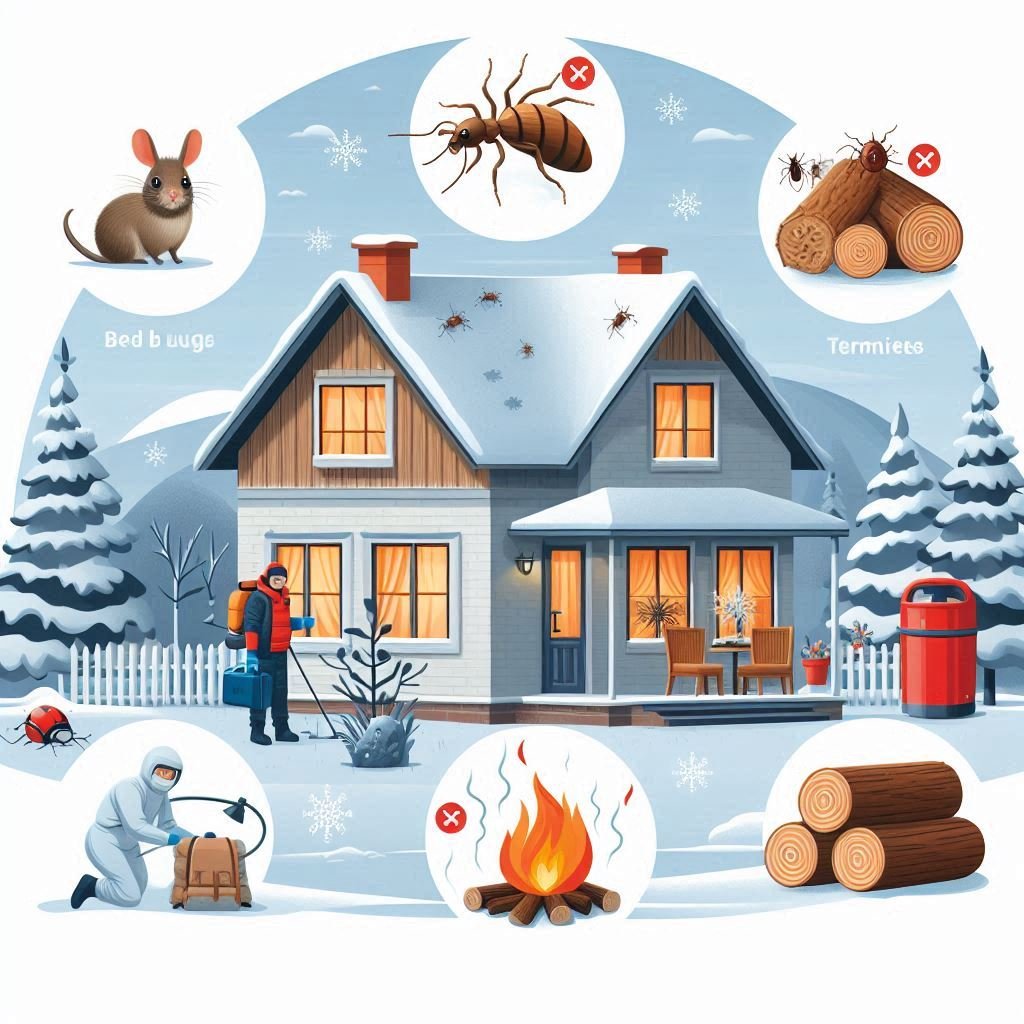
Summer is undoubtedly the most active pest season, but that doesn’t mean you can take these insects lightly in winter. Yes, pest control services like termite treatment and bed bugs treatment are equally in demand in winter, as they are in the summer.
Besides the common pests like cockroaches, termites, rodents, and mosquitoes, some peculiar winter pests tend to come out in cold weather. So, is there any way out to prevent these pests in winter?
Let us explore the different methods to deal with common winter pests in this article.
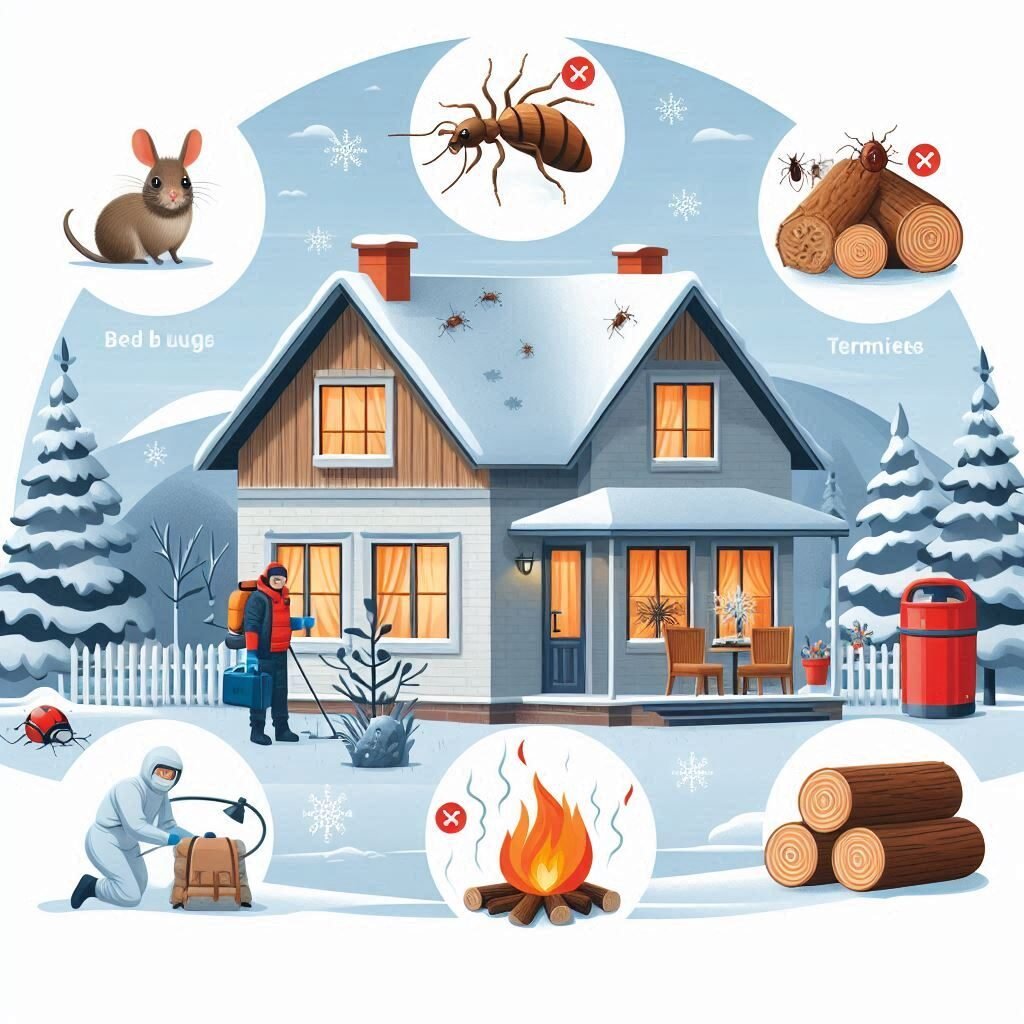
Common Winter Pests Found in Homes
Before we jump on to discuss the best ways to get rid of pests in winter, we want you to know what are these common winter pests that infest our homes.
Some of the pests found in winters intruding homes are:
- Bed Bugs
- Cluster Flies
- Flying Ants
- Moths
- Rats and Rodents
- Spiders
- Termites
Pest control in winter should be taken seriously. If ignored, these insects may soon take over your entire property, causing you serious damage. The best way to get rid of pests in winter is to plan for their eradication right after the first signs of their detection.
Top 10 Way to Prevent Common Pest in Winters
1. Keep Your Firewood Away
No one likes spending on a professional termite treatment in winter, so all the measures to avoid them should be practiced. The first one here is to store the firewood away from your home, as it may soon attract wood termites to your home.
2. Reduce Clutter at Home
You do not intend to spend on bed bugs pest control and want to enjoy a comfortable sleep on your bug-free beds? Then, make sure to declutter your home. These bed bugs tend to make their way to your beds by being transported through bags, shoes, dirty laundry, and delivery parcels. Minimizing the clutter in the home will help control these bugs to a large extent.
3. Proper Food Storage
You will hardly need to book a cockroach pest control if you pay attention to proper food storage in your home. Food is one of the main things that attract these pests. Perhaps, it is the reason that cockroaches are mostly seen hiding in the kitchen due to easy access to food. Avoid keeping food on kitchen countertops to prevent a cockroach infestation in winter.
4. Regular Home Cleaning
We agree winter is one season when we prefer cuddling all day long in our cozy quilts. But, when it comes to keeping your home pest-free, you must gear up for a regular home cleaning. Voila, you may hire professional home cleaning services and enjoy your cozy quilts too. The idea here is to prevent clutter in the home to prevent space for pest infestation.
5. Maintain Your Landscape
Winter should be no excuse for you to neglect your garden area or landscape. Overgrown bushes and untidy landscapes with wood piles act as open invitations to pests like termites and rodents. Make sure to trim your garden in winter to prevent all kinds of pests from hiding there. If you are unable to spare time by yourself, appoint an arborist to do the same but make sure you do maintain a trimmed garden even in winter.
6. Keep Moisture Leakage Under Check
It is a known fact that pests like roaches, mosquitoes, and rats are very fond of moisture. So, if you leave a leaking pipe or a clogged drain in your home, be ready to welcome pests in your home in the winter season. We, therefore, recommend you get all the water-leaking pipes and clogged drains repaired before the onset of winter.
7. Frequent Vacuuming Your Home
A quick tip for those who are worried about winter pest infestation at home is to use their vacuum cleaner. Yes, frequent vacuuming especially around the doors and windows, that make up for easy entry points for various pests will work! You can easily catch pests like silverfish, spiders, and beetles by vacuuming.
8. Check Your Chimneys and Ventilations
If you have chimneys in the kitchen and a fireplace in your living room, then you must be extra cautious. These chimneys are often the most neglected part of your home allowing pests to creep inside in search of warmth in your home. Make sure to clean the chimneys and inspect the chimney vents for any signs of pest infestation. Also, keep your home well-ventilated to avoid pest infestation.
9. Inspect Your Garbage Bins and Dumping Area
The sight that attracts many pests like rodents and roaches is your garbage bin. So, make sure to inspect your garbage bins every other day for any signs of rodents or other pests. Ensure you dump your garbage at a well-maintained and close dumping area outside your home in winter and all other seasons.
10. Book Professional Pest Control Services
The best and safest bet to overcome the problem of winter pests is hiring professionals for the same. Book pest control services to keep all kinds of pests at bay in winter. These trained professionals will offer a doorstep service leaving your home pest-free so that you can enjoy your winter sitting in your cozy blankets.
Why Is Winter the Best Time for Rodent Control?

Rodent season is upon us. You’ve probably heard that said with some sort of ominous undertones at one point or another. Nothing makes spaceowners cringe like the possibility of dealing with a rodent infestation.
Whether it be mice, rats, or other vermin, it is the time of year when we hear about them the most. Here is some background on just what rodent season is and what you can do to minimize damage and prevent it from happening to you.

Prepare For Rodent Season?
Rodent season refers to a period when mice and rats start to search for places to spend the winter. The season signals the beginning of cooler weather and the end of the breeding season. During warmer months, mice and rats breed seemingly non-stop. This may not seem like a huge problem until you realize each mouse can have up to 60 babies per year; rats can have up to 24. Mice also take only three weeks to reach sexual maturity so those babies can also contribute 60 babies to the environment.
Rodent season is slightly tricky to pin down to certain dates because different regions experience seasonal changes at varying times. Generally speaking, rodent season begins when the weather starts to cool. This can be anywhere from August to late October in the United States. Once it cools off hoards of vermin will begin their search for warmer spaces where they can hunker down for winter.
As the weather cools, mice and rats look for the most appealing and warmest spots to weather the winter months. Unfortunately, that usually means moving uninvited to our spaces, if possible. Not all mice and rats carry diseases, but many do. Maintaining a clean and healthy space is incredibly important, so keeping them vermin free can greatly contribute to that.
Not only do they carry harmful diseases but they can cause major damage to spaces. Wires are often chewed, excrement is left along their main pathways, holes are made in walls, and oily marks are left on surfaces where they travel frequently.
Don’t worry; there’s light at the end of the tunnel. When the ground starts to thaw, and the temperatures gradually begin to get warmer, you can breathe more easily knowing that, for the most part, the rodents will begin to move back outside.
During the winter food is more scarce, so when Spring arrives their natural food sources outside of your space are more abundant. Rest assured that between March through May rodents will begin making their way back outdoors.
Reasons Pest Control in the Winter is Important
1. Mice and rats seek shelter in your space.
In an attempt to find warmth through the winter, mice and rats are among the most common pests found in spaces during the winter. In addition to shelter, they try to find spaces where food and water are easily accessible, which can very well be your space. They find their way in through cracks and crevices found across your property. This is why it’s so important to have these openings sealed by professional help.
2. Pests try to live rent-free in your walls.
Contrary to popular belief, a wide variety of pests can survive the winter and remain active within your space. This is because wall-dwelling pests are not affected as much by the cold weather as other pests are. Among the typical winter wall-dwelling pests found across North Carolina include termites, cockroaches, and earwigs.
3. Wood-destroying pests still linger.
Even through the winter, wood-destroying pests such as carpenter ants and termites can find their way into your firewood and additional lumber. Carpenter ants don’t eat wood but carve into wood to make nests. Termites are notorious for eating away at wooden space structures, furniture, and more. Either way, these invasive pests are never welcome in the space and should be removed through winter pest control.
4. Attic and basement spider infestations still happen too.
Although the attic and basement of your space are usually colder and steer away more pests than other areas, they are far from pest-free. Spiders and their eggs can survive the colder conditions of attics and basements much better than other pests found throughout the winter. As these are commonly missed areas in the house, ensure you get your attic and basement inspected and treated.
5. Winter pest control better prevents spring pest infestations.
Alongside providing shelter for pests active in the winter, your space can also host a wide range of spring pests. Common spring pests in North Carolina include wasps and mosquitoes, among many others. It’s in your best interest to have professional pest control technicians perform thorough inspections to remove any future pest problems before the snow melts.
Precautions To Take For Rodent Season
Rodents love warm spaces that provide easy access to food and protection from predators. As they make their way indoors, they will undoubtedly make some noticeable changes at their entry points and pathways inside your space.
To avoid damage to your house and exposure to diseases that rodents carry, it is best to prepare early and well. Before you get anxious over the possibility of an impending rodent infestation, know there are tons of ways you can help prevent rodents from invading your space.
- Be On the Lookout – Look for droppings, gnaw marks, paw prints, chewed wires, or small holes and crevices in walls. Also, listen for scurrying noises in the walls or ceiling. These are all common signs that rodents have moved in.
- Get Rid of Clutter – Rodents love clutter since it provides a great space to hide from predators and lots of materials for a nest. Finding evidence of rodents is also easier if you don’t have to dig through piles of belongings.
- Upgrade Your Food Storage – Store your food in airtight containers. This will help make it much harder for mice/rats to access it or recognize it as a possible food source.
- Seal Cracks and Crevices – If you find a crack, hole, or crevice that is about a quarter of an inch wide (about as wide as a dime), seal it or have it fixed. Mice can fit through alarmingly small spaces.
- Use Repellents – Even if you’ve never noticed signs of rodents in your space, using a repellent is a great way to keep them from even thinking about coming in. Victor® offers repellents in both scent and ultrasonic form so you can find the best solution for your needs.
Effective DIY ant prevention solutions for Indian homes using natural repellents

Ants are one of the most common household pests and they can be very challenging to remove. Whether it’s a few scouts or an entire colony, the sight of ants in your kitchen, bathroom, or living room can be frustrating. However, with certain strategic and practical steps, we can stop ants from invading your space.
Sealing Entry Points is the First Step
Ants are incredibly tiny and can slip through the smallest cracks and gaps. To prevent their entry, one can inspect the exterior of their homes for crevices and small openings in the windows, doors and foundation. The gaps can be filled with silicone-based caulk or sealant . For further protection, you can install screens for windows to prevent their entry. By blocking their entry points, you create a physical barrier that ants can’t easily bypass.
Cleanliness Keeps The Pests Away
Ants, like any other pests, are drawing to food sources. This is why cleanliness is the key to keeping them away. Wiping down countertops, tables and other kitchen surfaces makes sure that ants aren’t attracted to food crumbs, grease and sugary residues.
Food should be stored properly to prevent their contamination with ants. Vacuuming daily and taking out the trash will prove useful in avoiding buildup of ant colonies around the house.
Natural Repellents are a Life-Saver
Several natural ingredients can be used to prevent ants from entering your home. These include:
- Vinegar solution: Ants are deterred by the smell of vinegar. Homeowners can create a solution of equal parts water and white vinegar and spray it around entry points like doorways, windowsills and baseboards.
- Essential Oils: Oils like peppermint, tea tree and lemon and be mixed with water and sprayed around the areas ants frequent to keep them away.
- Cinnamon and Cloves: Another home remedy for ants is to sprinkle ground cinnamon or place whole cloves around potential entry points. These spices are natural ant deterrents and will keep these pests away for good.
- Lemon Juice: Just like vinegar, the acidity of lemon juice interferes with ants’ scent trails, thus leading them away from your home.
Ant Baits for a Thorough Cleanse
Ant baits help lure the ants and they take the poison back to their colony, thus eradicating the source. Both homemade and commercial baits can be used such as borax mixed with sugar or honey at sites that ants frequent.
Precaution must be taken while using these as they can tend to be slightly poisonous for children and pets.
Preventing ants from entering your home requires a combination of cleanliness, sealing entry points, and using natural deterrents. By following the DIY solutions mentioned in this blog, you can create an ant-free environment. Remember that persistence is key—taking proactive steps can save you the hassle of dealing with an infestation down the line. If the problem persists despite your efforts, consider consulting a pest control professional for more targeted solutions.
Why Do Ants Keep Coming Back Even After Treatment?
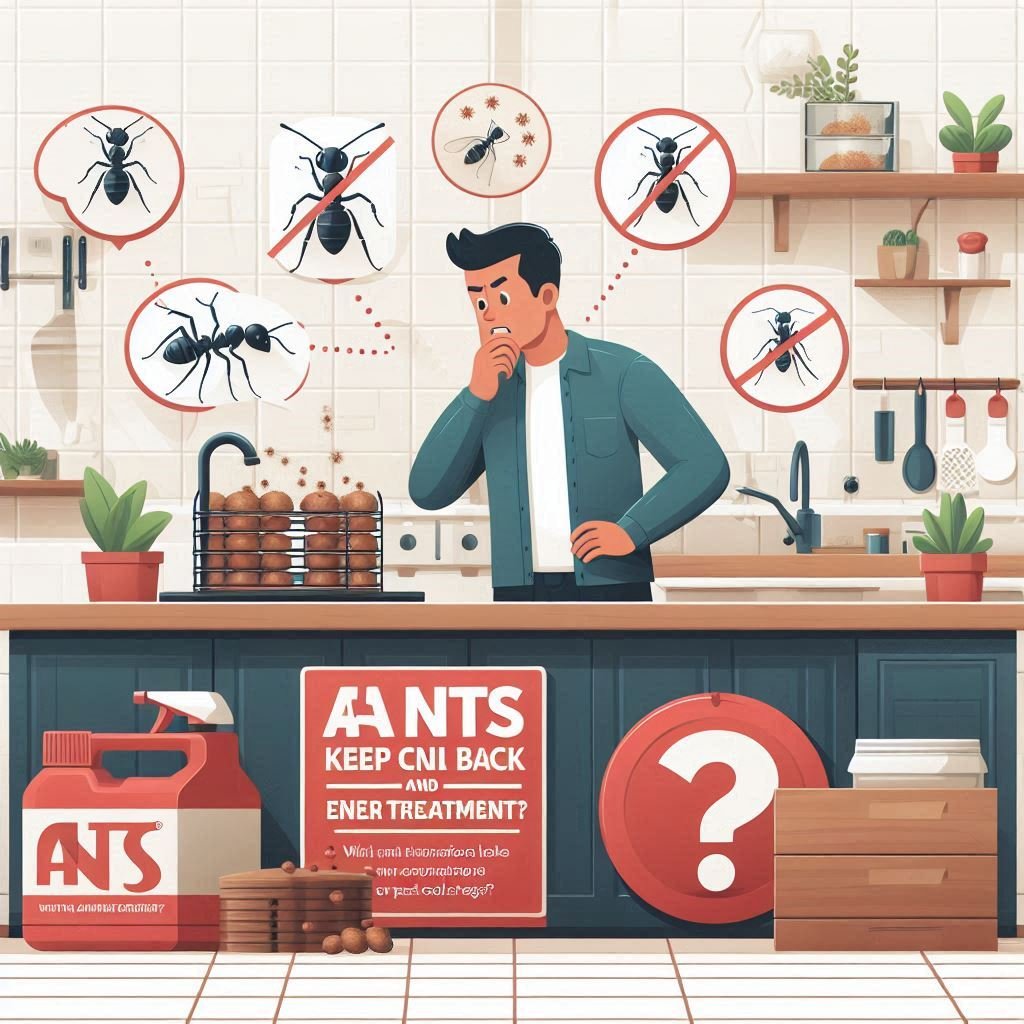
If you’ve ever dealt with an ant infestation, you’re likely familiar with the frustration of seeing ants reappear even after you’ve treated your home. No matter how many times you clean, spray, or set traps, they always seem to find their way back. This is a common issue for homeowners, but understanding why ants keep returning and what you can do for long-lasting control can make all the difference.
Some of the reasons as to why they keep coming back are:
Using Ineffective or Incorrect Treatments
A lot of the over-the-counter ant sprays or traps only offer a quick fix and do not really get rid of the problem. They simply keep running in circles chasing their tails. So surface sprays are going to kill the little ants you see, but if it’s a spray that isn’t specifically designed to penetrate into the nest and reach the queen, it will just be an ongoing problem. Also, for ants, bait type (using the wrong one may render treatment ineffective).
Determine the ant species nesting in your home and use a product formulated for that species. It is true that some ants are more attracted to sugary baits, while others may prefer protein-based baits. Once you understand what type of food the ants are after, you can choose how best to cure them.
Seasonal Infestations wreak Havoc
There are times during the year when ants become more persistent, namely in late spring and early summer as they search for food and water. By learning about it, you will then have a better understanding of whether or not to adjust your pest control strategy when ants begin reappearing during these specific times, because like I said above, in many cases it is normal since ants behave naturally by searching for food resources and supplying their colony.
If your ants come during ant season, you can try to prevent them. Assuming you use an ant preventative treatment in your home and yard, treat these areas before the ants arrive. We recommend sealing entrance points, removing leaf piles and other clutter around your home, and using outdoor baits or repellents to prevent ants from getting inside.
Long-Lasting Control Requires a Multi-Pronged Approach
As you can imagine, ant infestations are hard to battle and there is no one best way which works on every insect eradication. The key to long-term control is a multi-faceted plan that includes:
– Laying down bait systems directed at the queen and primary colonies.
– Washing away and obliterating scent trails.
– Addressing root causes of food and moisture that attract ants.
– Monitoring any potential ant hotspots and treating your home’s entire outer perimeter to close things off.
If the infestation still remains, don’t wait to hire professional pest control services for expert help.
Why Choose Urban Junggle Rat Control Services?
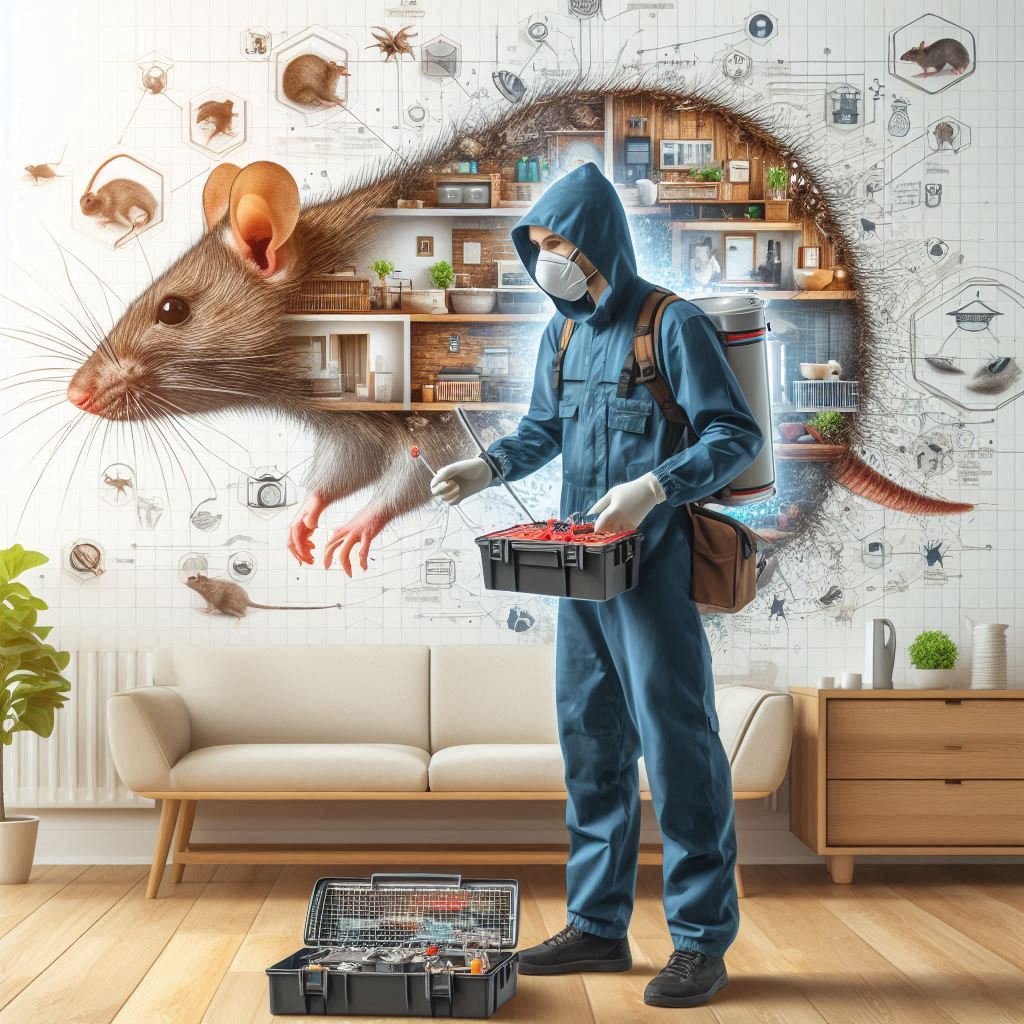
Rats are destructive pests that are common in every household, causing significant damage to property and food. These pests are known to pose serious health risks by spreading diseases like leptospirosis, hantavirus and salmonella. This is why it becomes important to control their infestation at the right time and with a trusted rat control services such as Urban Junggle.
But the question is, what makes Urban Junggle the best pest control out there? Here’s why.
An Exceptionally Experienced and Certified Team
Urban Junggle boasts a team of highly trained and certified professionals with years of experience in pest control. Their extended understanding of rat behaviour and biology allows them to implement effective strategies for eliminating infestations quickly. This expertise ensures that every corner of your property is inspected and treated, thus reducing the chances of re-infestation.
Use of The Best Rat Control Solutions
Urban Junggle offers a comprehensive approach to rat control, addressing all causes of infestation and eliminating them swiftly. A thorough inspection leads to locating of all entry points, nesting areas and food sources that attract rats. This is followed by exclusion techniques such as sealing of gaps, cracks and holes, preventing further access of rats.
Urban Junggle believes in humane and effective trapping methods such as baiting systems that target the rats without posing a threat to other non-target animals.
The entire process is then wrapped up after rodent proofing and sanitation. The team ensures that potential food sources and nesting materials are removed, making the space less attractive to rodents.
Safe Treatment Methods to Reduce any Health Risks
At Urban Junggle, the safety of your family and pets is a top priority. This is why only rat control products that are safe and gentle on living beings and the environment are used.
Unlike traditional rat control methods that involve harmful chemicals, Urban Junggle uses sustainable control methods that is an ideal choice for households with children, pets or anyone concerned about minimizing environmental footprint.
Quick Service Right at Your Doorstep
Rat infestations require immediate action thus, Urban Junggle provides emergency rat control services ensuring that you can get rid of the infestation as quickly as possible. Their quick response time minimizes the damage and health risks associated with a rat infestation.
No matter the time of the day, Urban Junggle’s team is ready to provide rapid and effective service, addressing urgent concerns before they escalate.
Choosing Urban Junggle for rat control services means entrusting your home or business to experts who prioritize safety, efficiency, and long-term results. Their comprehensive solutions, eco-friendly approach, and dedication to customer satisfaction make them the ideal choice for anyone facing a rat infestation. Whether you need immediate assistance or are looking for preventative measures, Urban Junggle has the expertise and resources to keep your property rat-free.
By opting for Urban Junggle, you’re not just getting rid of rats – you’re investing in a healthier, safer, and more secure environment.
How to Keep Your Home Cockroach-Free After a Professional Treatment?

The battle against cockroaches doesn’t really end after professional treatment since these resilient beings like to keep coming back for more. This is why, proper maintenance becomes mandatory for homeowners looking for peace from these pests.
A Clean Home is a Home without Cockroaches
Cleanliness is one of the most important factors when it comes to preventing cockroach infestations. Homeowners need to keep food scraps, spills and grime away and adopt regular cleaning habits even after professional treatment to help ensure that there’s nothing to attract these pests back into their homes.
Wiping surfaces, vacuuming and emptying the trash should become a daily activity.
Sealing Entry Points because All Invited Guests Enter Through the Door
Cockroaches can enter the home through tiny cracks, holes and gaps. This is why, even after professional treatment, steps must be taken to close off potential entry points to prevent a new invasion. Sealing of cracks and crevices needs to be done using caulk or sealant to close off all access points. Homeowners can also opt for installing door sweeps to block cockroaches from crawling under exterior doors. Using weather stripping around windows and sealing gaps around plumbing fixtures can prevent cockroaches from sneaking in.
Proper Food Storage to Keep Cockroaches Away
Cockroaches are always on the lookout for easy food sources and thus, properly storing your food helps them keep out of your homes and possibly contaminating it. Store your grains, cereals and other pantry items in airtight containers and your perishables in the refrigerator where they cannot reach.
Keep an Eye Out for These Sneaky Pests
After professional treatment, it’s important to remain vigilant and monitor for any signs that cockroaches may be returning. Early detection allows you to take action before a full-blown infestation occurs.
Regularly check high-risk areas such as under appliances, in cabinets and behind furniture. Make sure to use sticky traps in case you witness slight cockroach activity to actively remove it.
Stay Proactive to Keep Cockroaches at Bay
Maintaining a cockroach-free home after professional treatment requires ongoing effort and vigilance. By practicing good cleaning habits, sealing entry points, managing food and water sources, and regularly inspecting your home, you can significantly reduce the chances of a re-infestation. Remember that cockroaches are resilient pests, but with the right preventive measures, you can keep your home pest-free and enjoy a healthy, clean environment.
If you ever notice any signs of cockroaches returning, don’t hesitate to consult a professional pest control service to address the problem before it worsens.
How Safe Are Cockroach Control Products for Humans?
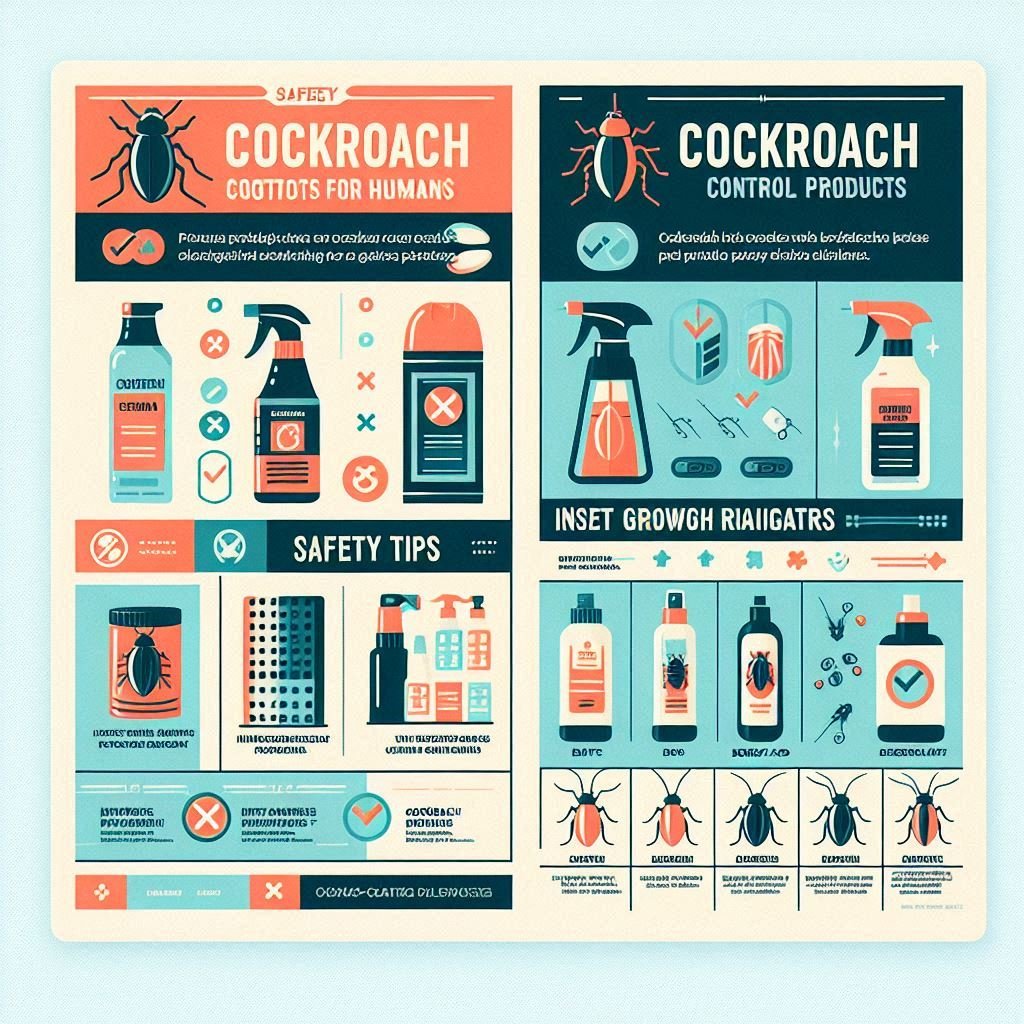
Cockroaches are one of the most common pests found in households and can potentially risk the inhabitant’s health as they carry bacteria, allergens and other contaminants. This has led to the increase use of cockroach control products in almost every home. While they are effective, it has also raised concerns about the safety of these products to humans and pets alike.
Some Common Cockroach Control Products
Cockroach Control Products that are available in the market are of two types- chemical and non-chemical. Some of the most common products are:
- Insecticidal Sprays: These are most widely used forms of pest control. These consist of pyrethroids which target cockroaches’ nervous system, rendering them inactive.
- Cockroach Baits: These include gel baits or bait stations where cockroaches are attracted to slow-acting poisons so they can carry it back to their nest, effectively poisoning other cockroaches as well.
- Cockroach Traps: Usually used at places frequented by cockroaches, these are sticky traps that are non-toxic to humans and are often used alongside chemical products for effective control.
- Boric Acid: This is a popular DIY pest control option which is sprinkled in areas that are prone to cockroach activity. The powder clings to the cockroaches’ bodies as they walk over it and ingestion slowly causes death.
- Insect Growth Regulators (IGRs): These are chemical compounds that interfere with the growth cycle of the organism. These prevent cockroach eggs from maturing, thus reducing the population over time.
How Harmful Are These Products to Humans?
It is important to be aware of the risks associated with using pest control products before their use to avoid mishaps. The risks posed by such products depends on the type of product, the level of exposure and the precautions taken during its application.
- Insecticidal Sprays are effective but pose potential risks such as irritation, headaches, dizziness and respiratory issues if inhaled in large quantities. Long-term exposure to these can lead to serious health issues especially in children, preganant women and individuals with asthma.
- Cockroach Baits are relatively safe for humans as they are specific for cockroaches. However, ingestion by pets or children should be avoided as it might lead to vomiting, dizziness or mild poisoning.
- Cockroach Traps pose minimal health risks to humans but should be avoided from human or animal contact.
- Boric Acid is a natural and safe method for controlling cockroaches but it can still be harmful if ingested or inhaled in large amounts. Direct contact should be avoided as it can cause skin irritation.
- Insect Growth Regulators (IGRs) are the safest pest control products as they affect cockroach hormones and have no effect on humans. However, direct contact should be avoided as a precaution.
Safety Tips While Handling Pest Control Products
- Always wear gloves while handling pest control products.
- Follow instructions given on the packaging
- Dispose of traps to avoid roach buildup
- Avoid placing baits near food or utensils
- Wash hands after handling any pest control product

